
Belmont’s Mary Hencken hones her Women’s Bassmaster Tour skills at Lake Wylie.
After 10 ½ years, Belmont’s Mary Hencken left a promising, good-paying job as a physical therapist assistant for a high-risk, financially insecure career as a professional fisherman.
“I always wanted to be a professional angler as a kid, but I grew up poor in South Florida and knew I had to get an education, so I attended Broward Community College, graduated, and went to work,” she said.
“But the yearning for a fishing career lingered after I moved to North Carolina, so in 1999, I left my job and went to work for Bass Pro Shops at Concord. I don’t know if it was a mid-life crisis or what, but I made the move.”
Her employment became advantageous to her and her employer. Bass Pro Shops allowed Hencken time off to pursue her dream. In return, she served as a goodwill ambassador for Bass Pro Shops and bass fishing at work and on the tournament trail.
“My Bass Pro Shops job proved to be a great marketing tool,” Hencken said. “I got to meet many fishermen; I got a chance to promote the sport by talking to customers of all ages; I made contacts with potential sponsors; and I generated a public interest in me as a professional woman angler.”
Hencken joined the short-lived Women’s Bass Fishing Association circuit in 2005 and began to realize a dream that had been nurtured during her youth.
“My first mentor was my dad, who took me fishing on weekly family outings in the Everglades when I was 6-years old,” she said. “I took to it as a duck takes to water.”
Hencken’s dad was a demanding piscatorial role model who practiced only one form of fishing and thought his daughter should do likewise.
“He wouldn’t let me use live bait because he said that was cheating,” Hencken said. “I used an open-faced spinning reel, a 6-foot rod, and fished with plastic worms and surface lures.
“Dad taught me how to cast, how to tie knots, and how to catch Florida bass.”
Hencken credits fishing with keeping her out of trouble as a youngster because trouble was easy to find in the Ft. Lauderdale area where she was born and raised.
“Fishing also taught me patience and perseverance, things you can‘t get from books,” Hencken said.
For a time, she became a self-taught angler, devouring any magazines, newspapers, and radio and TV programs related to bass fishing. During her early years, she fished from shore, graduated to a john boat, and eventually got a bass boat.
In 1996 Hencken left Florida and moved to Belmont and quickly fell in love with the Charlotte area and the bass fishing at lakes Wylie and Norman.
She discovered bass fishing at North Carolina impoundments was quite different from bass fishing at the Florida Everglades.
“South Florida fishing was mainly shallow-water fishing in the grass,” Hencken said. “I never fished in water more than 10-feet deep and had no experience with structure fishing.”
To acclimate herself to Tar Heel bass fishing, Hencken joined a local Guys and Dolls bass club, fished open tournaments at Wylie and Norman, and competed on the U.S. Couples trail.
While these activities helped hone her skills as a bass fisherman, she also gained knowledge about deep-water fishing Carolina style when she came under the tutelage of former Lake Wylie guide, Mark Goss, now of Montana.
“Goss taught me how to fish structure with Carolina rigs, crankbaits, and jigging spoons,” Hencken said. “Most of my Florida fishing was limited to topwater lures and plastic worms.”
Hencken also learned her craft at the school of hard knocks.
“No one knows the countless number of hours I spend on the water just so I can catch fish for one hour,” Hencken said.
Hencken also faced a delicate situation familiar to many an aspiring pro.
When her relationship with her future husband Alan, a non-fisherman from New Jersey, took a serious turn, Hencken decided to level with him.
“I told him I had a bad habit, and he sort of gasped and said ‘Excuse me?’ ” Hencken said. “He thought I was talking about drugs or drinking.
“I told him my bad habit was bass fishing, that I spent a lot of time on the water with fishermen and friends, that I would spend some money on it, and that it was my ‘mental time,’ a time to relax and unwind. I said I hoped he wasn’t put off by it.”
To the contrary, Alan not only learned to cope with Hencken’s habit, but with her guidance, he took up bass fishing himself and now supports her in the pursuit of her dream.
In 2006 BASS initiated its Women’s Bassmaster Tour, and Hencken viewed it as an opportunity to step up as a professional angler with a well-known organization.
“I could see that everything was lining up, so I could pursue my dream: my job at Bass Pro Shops, my contact with the public and sponsors, my mentoring experiences at N.C. lakes,” Hencken said. “I can do this I thought.”
Her first two years fishing the WBT were highly successful, perhaps too much so.
She finished 17th in the Angler of the Year standings for 2006 and 14th in the Angler of the Year standings for 2007.
This year has been difficult for Hencken. She currently ranks 49th in the standings and had to place in the top three at the Sept. 18-20 WBT event at Clarks Hill Lake, Ga., to make this year’s championship tournament.
Yet she views her difficulty this season as a positive experience that will make her a better fisherman.
“I’ve had good practices at some tough fishing lakes, but the practices didn’t translate into many fish during tournaments,” she said. “But I’m learning how to read different bodies of water.”
She’s maintained her level of confidence too.
“I’m no better fisherman than anyone else unless I’m having a good day on the water,” she said. “If I’m having a good day, then I can really hurt you.”
She’s also learned the women’s tour isn’t any different than the men’s tour in respect to its competitive nature.
“The women are friendly and sociable off the water, but once the tournament starts, there are no tea parties out on the lake,” she said. “We don’t stop and chat with one another. It’s all business.
“We’ve had our share of complaints and protests during tournament competition.”
When Hencken’s not competing in tournaments, she views herself “as a girl who loves to fish” and who loves to help others catch fish.
In that light, she views the current period from October through November “as a fun time” to fish for bass and offers the following tips for putting more fish in the boat.
“These tips are geared toward Wylie, my home lake, and Norman, but they’ll work at most lakes during the fall,” Hencken said.
When the water temperature cools to 80 degrees, bass start moving into the creeks. When it drops to 75 degrees, the fish become more aggressive and move into 5 feet of water or less to feed up for the winter.
At this time, Hencken relies upon three baits to locate fish at the creek backs and pockets.
“They’re search baits because they allow me to cover a lot of water quickly and efficiently,” she said.
Hencken begins her search with a ½-ounce Rat-L-Trap retrieving it at a moderate rate of speed about 1 or 2 feet below the surface at pockets and backs of creeks. If that approach fails, she switches to a 3/8-ounce spinnerbait with silver double-willow blades and a white skirt and retrieves the bait at similar places 1- to 2-feet beneath the surface. If the spinnerbait doesn’t produce, she ties on a shad-colored No. 7 Shad Rap and probes the creek backs and pockets with that lure.
If no strikes occur, Hencken moves out of the pockets and creek backs to flats and rip-rap points slightly further out from the creek backs and searches those areas for bass with the same baits.
These search techniques will locate fish most of the time but not all of the time.
“Fish don’t always do what you think they should do; they don’t read the books,” Hencken said.
If needed, Hencken extends her search for fish to pockets and points halfway out of creeks and eventually to the mouths of creeks.
“If these places hold forage, they’ll also hold fish because fish will follow their food supply,” she said.
While searching, Hencken also looks for schooling bass, a common occurrence in the fall. The schoolies usually are half to three-quarters of the way into the creeks along rocky or rip-rap points.
For schooling bass, she prefers small surface lures, such as the Lucky Craft Sammy 85, an aggravating, walk-the-dog type of bait. If that bait doesn’t provoke strikes, she downsizes to a Lucky Craft Gunfish 95, a slimmer, slower bait with a more subtle topwater action. If there are still no takers, she fishes a pearl-colored JymSu Jitter-Pop lure using a pop-and-pause retrieve.
As many fishermen know, sometimes schooling bass won’t bite no matter the angler’s lure.
Hencken said this happens when fish have an ample food supply and get full or are so heavily pressured they won’t respond to topwater offerings.
To solve the problem, Hencken fishes beneath the forage for larger fish dining upon scraps of forage left by smaller fish. She uses a Zoom Super Fluke Jr. in conjunction with a flutter hook — that’s a No. 3/0 or 4/0 weighted wide-gap hook.
Pre-weighted hooks can be hard to find. If none are available, she clamps split shot on hooks of the same size and design as the flutter hooks.
This fishing technique requires patience as the Zoom Fluke must be allowed to free fall slowly through the forage after the cast. For that reason, she uses 12-pound-test Gamma fluorocarbon line, a line which sinks and has little stretch for better hooksets.
“You can twitch the bait a few times if you want,” Hencken said, “but it’s best to let the bait fall on its own so that it resembles a crippled minnow.”
Her last two techniques for fall fishing include a little-used method and a popular new method.
Her non-conventional approach is to pitch a 3/8-ounce spinnerbait with four blades at pier posts and pylons and edges of floating docks. Hencken uses silver blades for clear water; gold blades for stained water.
“The four blades imitate a pod of shad,” she said. “I kill the spinnerbait and let the blades flutter down along the pier posts and dock edges. If a fish is there, it can’t resist that bait,” she said.
Four-bladed spinnerbaits, which can be hard to find, are made by Dave’s Tournament Tackle of Greensboro and Tackle Town of Maiden.
Hencken targets piers near shallow flats and along the sides of creeks wherever the water is about 5-feet deep..
Her final tactic is swimbait fishing, which has become a hot approach with fishermen for big bass.
Hencken prefers a 5-inch Carolina shad-colored JymSu Britt Myers swimbait. It’s available at www.jymsubassbaits.com. The pre-weighted bait has a flash foil embedded within it.
Hencken fishes the swimbait at flats, points, and pockets retrieving the lure a few feet beneath the surface.
Finally, Hencken selects fishing tackle that complements her approach to fall fishing.
For fishing spinnerbaits and Rat-L-Traps, she uses a Shimano Curado reel with a 6:2:1 gear ratio. The reel is spooled with 14-pound-test Gamma co-polymer line and mounted on a medium/heavy 6 1/2-foot Shimano or G Loomis rod.
The high-speed gear ratio is critical to Hencken’s search tactics because the fast retrieve enables her to fish quickly and to keep her baits riding about a foot or two beneath the surface.
For fishing the Shad Rap, she uses the same reel spooled with Gamma fluorocarbon 10-pound test line but changes to a medium/action 6 1/2-foot rod because its softer tip prevents her from tearing the treble hooks out of the fish.
For those anglers who have difficulty casting a Shad Rap with baitcasting tackle, she suggests a Shimano Stradic spinning reel with a 6:2:1 gear ratio matched with a medium/action 6 ½-foot Shimano or G Loomis spinning rod.
She uses the Shimano fast-ratio spinning reel for topwater baits as well and fills the reel with low-memory Trilene XL 10-pound-test line. Her rod choice is a medium/action 6 ½-foot spinning rod.
For other topwater lures, like the Sammy 85 and Gunfish, she selects Gamma 12-pound-test co-polymer line, which is abrasive resistant in case a fish inhales one of the lures.
Hencken opts for baitcasting gear with the swimbait employing the fast-retrieve Shimano Curado reel, 14-pound-test Gamma co-polymer line, and a 6 1/2-foot medium/action rod.
For pitching spinnerbaits, she again uses the fast-ratio Curado reel with Gamma 14-pound-test line. Her rod choice is a medium/heavy 7-foot model for better pitching distance and for additional leverage to move bass away from the piers in a hurry.
“The only time I use a slow-ratio reel is for fishing deep water with crankbaits,” she said.
One other vital piece of equipment, especially for shallow-water fishing, is the Power-Pole, an automatic anchor and positioning system that attaches to the transom of the boat. It’s carried by David Fritts Outdoors in Lexington and Tracker Marine in Concord. For other dealers, visit www.powerpole.com.
Hencken owns an 8-foot XL model which functions via a wireless remote control. When her boat is in 8 feet of water or less, she can anchor the boat immediately.
“It’s great for sight-fishing in the spring, holding your boat steady in current or wind, or for doing tasks, such as tying on another bait,” she said. “With a Power-Pole, you don’t have to use your trolling motor to maintain your boat position.”
While Hencken is living her dream, she tries to share it with others. During one outing at Lake Wylie, one angler at a public fishing pier called to her by name.
“That’s one of my customers at Bass Pro Shops, who asked me about a good place to fish from the bank,” she said. “I get about as much pleasure helping others to catch fish as I do catching fish myself.”


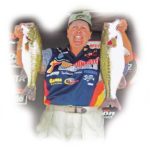
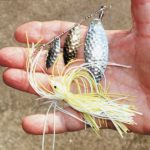
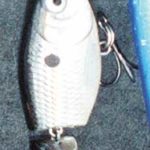
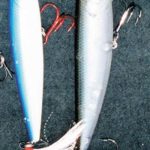
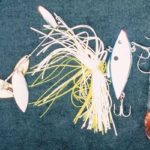
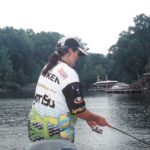



Be the first to comment